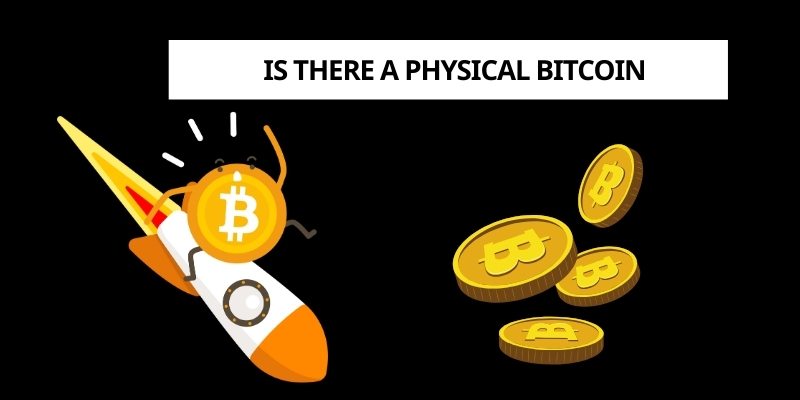In the digital age, Bitcoin has revolutionized finance as a decentralized cryptocurrency, existing solely on the blockchain. Yet, the concept of a physical Bitcoin—a tangible representation of this digital asset—captivates enthusiasts and collectors alike. But what exactly is a physical Bitcoin, and does it truly exist? This article delves into the fascinating world of physical Bitcoin, exploring its purpose, mechanics, value, and implications for the future of cryptocurrency.
What Is a Physical Bitcoin?
A physical Bitcoin is not a coin in the traditional sense, like a dollar or euro coin. Instead, it is a physical object, often designed as a metallic coin or card, that represents a specific amount of Bitcoin stored on the blockchain. These objects typically contain a private key—a cryptographic code granting access to the associated Bitcoin—hidden beneath a tamper-evident hologram. Once the hologram is removed, the private key can be used to transfer the Bitcoin to a digital wallet, rendering the physical object a collectible relic.
The allure of physical Bitcoin lies in its ability to bridge the gap between the intangible nature of cryptocurrency and the human desire for something tangible. Companies like Casascius, Denarium, and Ballet have produced these items, with Casascius coins being the most iconic. Introduced in 2011 by Mike Caldwell, Casascius coins were embedded with Bitcoin denominations ranging from 0.1 to 1000 BTC, making them both a store of value and a collector’s item.
How Does a Physical Bitcoin Work?
The mechanics of a physical Bitcoin are both ingenious and secure. The coin or card features a public address (or a portion of it) printed on its surface, allowing users to verify the Bitcoin balance on the blockchain. The private key, concealed under a hologram, is the critical component. Removing the hologram reveals the key but also signals that the coin’s Bitcoin may have been accessed, reducing its value to that of a collectible.

For example, a Casascius coin with 1 BTC might display a public address showing the balance on a blockchain explorer. To redeem the Bitcoin, the owner scans or enters the private key into a digital wallet. However, this act destroys the coin’s tamper-evident seal, making it less appealing to collectors. Modern physical Bitcoins, like those from Ballet, incorporate QR codes for easier wallet access, enhancing usability while maintaining security.
The Value Proposition of Physical Bitcoin
Physical Bitcoin holds a dual value: the intrinsic worth of the Bitcoin it represents and its collectible appeal. The Bitcoin value fluctuates with market prices—1 BTC could be worth tens of thousands of dollars in 2025. However, the collectible value often surpasses the cryptocurrency’s market price, especially for rare items. A 2013 Casascius coin with 0.1 BTC, for instance, might fetch $20,000 at auction due to its scarcity and historical significance.
Factors influencing value include:
- Rarity: Limited-edition coins, like early Casascius batches, are highly sought after.
- Material: Coins made of gold or silver carry intrinsic material value.
- Condition: “Unpeeled” coins with intact holograms command higher prices than “peeled” ones.
- Market Demand: Platforms like eBay and Bitcointalk drive prices based on collector interest.
Advantages and Challenges
Physical Bitcoin offers unique advantages. For collectors, it’s a tangible piece of cryptocurrency history, blending art and technology. For investors, it serves as a form of cold storage, keeping Bitcoin offline and safe from cyber threats. Its decentralized nature aligns with Bitcoin’s ethos, allowing users to store wealth in diverse formats.
However, challenges abound. Physical Bitcoins are less practical than hardware wallets, which offer reusable, secure storage without sacrificing collectible value. The risk of fraud is significant—counterfeit coins or tampered holograms can deceive buyers. Verifying authenticity requires checking the hologram’s integrity and the public address’s balance on the blockchain. Additionally, legal hurdles have stifled production. In 2013, Casascius ceased operations after the U.S. Financial Crimes Enforcement Network (FinCEN) classified its activities as “money transmission,” requiring costly licensing.
The Legal Landscape
Owning a physical Bitcoin is generally legal in jurisdictions that permit cryptocurrency. However, producing and selling them can trigger regulatory scrutiny. The Casascius shutdown highlighted tensions between physical Bitcoin and traditional financial systems, with some arguing that these coins could be seen as competing currencies. Buyers must ensure purchases come from reputable sources to avoid legal or financial risks.
The Future of Physical Bitcoin
As cryptocurrency evolves, physical Bitcoin remains a niche but enduring phenomenon. While hardware wallets dominate for secure storage, physical Bitcoins appeal to collectors and those seeking a tangible connection to the digital world. Their value as historical artifacts grows as fewer are produced, with companies like Denarium halting operations and others like Ballet focusing on modern designs.
For enthusiasts, physical Bitcoin represents more than a coin—it’s a symbol of the cryptocurrency revolution, blending innovation with tradition. Whether you’re a collector, investor, or curious observer, the question “Is there a physical Bitcoin?” is answered with a resounding yes, and its story continues to unfold.

